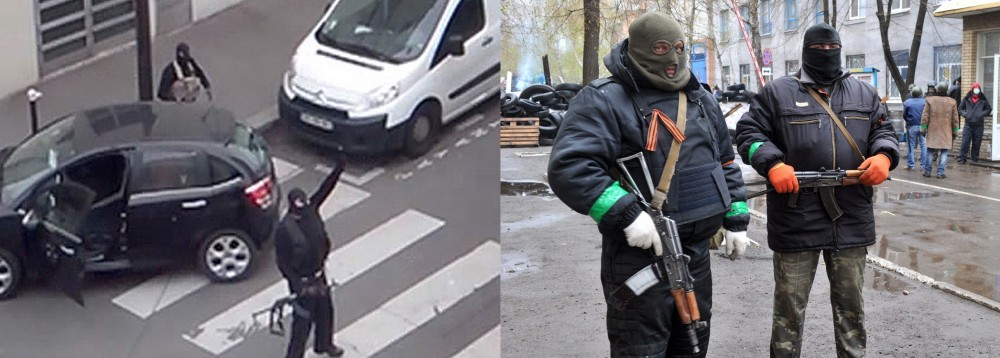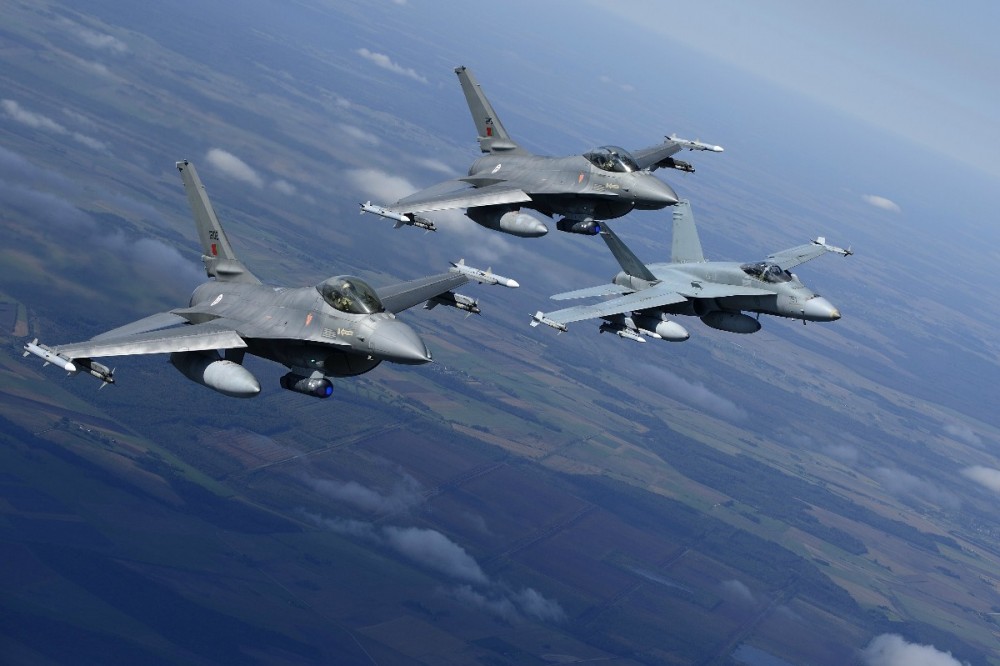Over the last 15 years Sweden has cut its defense budget by 40%, going from 15 combat brigades to none, and the combat readiness of its troops dropped from 1 day to weeks. In short, Sweden fully enjoyed the peace dividend. But Sweden isn’t alone: almost all European nations more than halved their defense budgets and cut their armed forces by two thirds. The money saved by this was then spent on welfare, which isn’t a bad idea, as long as there is peace. However, peace is over.
And it is not just the implosion of (so far) four Arab countries, the looming war between Sunni regimes and Iran, and the Russian attack on Ukraine that should finally wake up even the last complacent peacenik in Europe. The last proof that peace is over is Russia's announcement to double its airborne forces by 2017 and increase its army by 50%. Russia prepares for war. Since Putin came to power, Russian defense expenditures have increased by 989% and in 2015 they grew by another 15%. Today Russia spends over a quarter of all government spending on defense; that is over 6% of GDP. Russia spends for war.
Therefore, it is high time European nations began to reverse the decline of their armed forces. But Europe does not need more troops. The European Union already fields the second largest military in the world: 122 combat brigades, over 2,000 fighter jets, over 60 submarines, more than 110 frigates and destroyers, and that is not even counting major NATO allies like Türkiye, the US or Canada. The problem isn’t the amount of troops, but the low readiness of those troops, their wrong dislocation of troops, the lack of key technologies, the lack of standardization of units, and the absence of will in European leaders.
The readiness of troops is low as there is no money to equip, train, and maintain European forces. Brigades, ships and fighter wings aren’t based where they are needed. I.e. there are no heavy mechanized brigades in the Baltic States, even though EU members field 53. Thus, just the three active brigades of the Baltic States stand against 5 divisions, 12 independent combat brigades, and 19 support brigades of Russia’s Western military district. And there are no reserves and none will come, as explained in my article "Harsh realities and Western betrayals to come".
Europe’s armies lack key technologies e.g. cruise missile submarines, modern Electronic Warfare equipment, etc. as these are expensive and there is no money, because European politicians prefer to pamper their electorate with costly gifts rather than invest in defense, and also because each European military keeps funding similar programs and capabilities to indulge its own defense industry and national ego. Standardization of units and equipment would rectify some of these problems, as I explained earlier, but with the current crop of politicians there is little hope we will see such standardization or an increase in defense expenditures before war breaks out.
Common steps to take
But the frontline states Estonia, Latvia, Lithuania, Poland, and Sweden cannot wait any longer, they must prepare for war. First and foremost, these five nations must immediately begin to arm Ukraine, because the longer Russia’s campaign in Ukraine lasts and the bloodier it is, the later and weaker Putin’s strike against the Baltics will be. Lithuania realized this months ago and has been delivering weapons to Ukraine since. Furthermore, Sweden, Poland, and the Baltic States need to cooperate with Ukraine and Romania on weapons procurement. This would bring huge cost benefits to the all nations involved and massively strengthen their defense capabilities, as I showed last September in the article "Sweden has the tech".
First Sweden, Poland and the Baltic States must begin to aggressively weed out Russian spies, infiltrators and quislings. By now thousands of Russian spies and agents have penetrated Europe, yet only Sweden’s Saepo intelligence agency admitted publicly that at least a third of Russian embassy employees in Stockholm are spies engaged in “preparations for military operations against Sweden.” Besides the spies acting under diplomatic cover, dozens of illegal Russian operatives are active in Sweden too and the same applies to every nation along the Baltic shore. Those spies and their contacts must be eliminated.
All five nations, actually all European nations, must wean themselves from Russian gas, as buying Russian gas fuels the Russian war machine. The less gas Europe buys from Russia, the less leverage Putin has over European nations and the fewer funds to wage his wars. Russia’s has built up its capabilities for cyberattacks and as a recent question by a Russian state representative to NATO Secretary General Stoltenberg showed, Russia is planning to use it as a first strike weapon. Luckily, Stoltenberg answered that a cyberattack can be considered an Article 5 issue and that he is not going to indulge Russia by publicly disclosing how NATO will respond. Nevertheless, spending on cyber defense needs to double in each nation under threat.

Estonia, Latvia and Lithuania need to build up their police forces to have a large numbers of riot-control units ready to squash Kremlin-engineered unrest on their territories. Police Special Forces need to expand to be able to terminate armed Russian insurgents within minutes after appearing on the streets. The Charlie Hebdo terrorists were armed with the same guns and masked in the same style as the Russian intelligence operatives, who occupied Sloviansk a year ago. Nations do not negotiate with terrorists and the masked, armed Russian intelligence operatives and insurgents who occupy government buildings are terrorists and we must deal with them exclusively with bullets, grenades and bayonets. No talking.
Estonia, Latvia and Lithuania, as well as Poland, must begin organizing, equipping and training volunteers to form guerilla units in areas overrun by Russian forces and, last but not least, all nations bordering Russia and under threat of Russian aggression must consider each Russian military exercise as a prelude to war. Just as during the Cold War Warsaw Pact forces went on higher alert every time NATO held an exercise, from now on the Baltic States, Sweden, Poland, as well as Finland, Norway and Ukraine must bring their forces to a higher state of readiness when Russia begins a new military exercise.
In-depth analysis of the current military capabilities and the required changes to defend Sweden, Poland and the Baltic States can be found in the following articles:





